Crowds and Democracy
COLUMBIA THEMES IN PHILOSOPHY, SOCIAL CRITICISM, AND THE ARTS
COLUMBIA THEMES IN PHILOSOPHY, SOCIAL CRITICISM, AND THE ARTS
Lydia Goehr and Gregg M. Horowitz, Editors
ADVISORY BOARD
| Carolyn Abbate | Arthur C. Danto |
| J. M. Bernstein | John Hyman |
| Eve Blau | Michael Kelly |
| T. J. Clark | Paul Kottman |
Columbia Themes in Philosophy, Social Criticism, and the Arts presents monographs, essay collections, and short books on philosophy and aesthetic theory. It aims to publish books that show the ability of the arts to stimulate critical reflection on modern and contemporary social, political, and cultural life. Art is not now, if it ever was, a realm of human activity independent of the complex realities of social organization and change, political authority and antagonism, cultural domination and resistance. The possibilities of critical thought embedded in the arts are most fruitfully expressed when addressed to readers across the various fields of social and humanistic inquiry. The idea of philosophy in the series title ought to be understood, therefore, to embrace forms of discussion that begin where mere academic expertise exhausts itself, where the rules of social, political, and cultural practice are both affirmed and challenged, and where new thinking takes place. The series does not privilege any particular art, nor does it ask for the arts to be mutually isolated. The series encourages writing from the many fields of thoughtful and critical inquiry.
Lydia Goehr and Daniel Herwitz, eds., The Don Giovanni Moment: Essays on the Legacy of an Opera
Robert Hullot-Kentor, Things Beyond Resemblance: Collected Essays on Theodor W Adorno
Gianni Vattimo, Arts Claim to Truth, edited by Santiago Zabala, translated by Luca DIsanto
John T. Hamilton, Music, Madness, and the Unworking of Language
Stefan Jonsson, A Brief History of the Masses: Three Revolutions
Richard Eldridge, Life, Literature, and Modernity
Janet Wolff, The Aesthetics of Uncertainty
Lydia Goehr, Elective Affinities: Musical Essays on the History of Aesthetic Theory
Christoph Menke, Tragic Play: Irony and Theater from Sophocles to Beckett, translated by James Phillips
Gyrgy Lukcs, Soul and Form, translated by Anna Bostock and edited by John T. Sanders and Katie Terezakis with an introduction by Judith Butler
Joseph Margolis, The Cultural Space of the Arts and the Infelicities of Reductionism
Herbert Molderings, Art as Experiment: Duchamp and the Aesthetics of Chance, Creativity, and Convention
Whitney Davis, Queer Beauty: Sexuality and Aesthetics from Winckelmann to Freud and Beyond
Gail Day, Dialectical Passions: Negation in Postwar Art Theory
Gerhard Richter, Afterness: Figures of Following in Modern Thought and Aesthetics
Boris Groys, Under Suspicion: A Phenomenology of the Media, translated by Carsten Strathausen
Michael Kelly, A Hunger for Aesthetics: Enacting the Demands of Art
Crowds and Democracy
THE IDEA AND IMAGE OF THE MASSES FROM REVOLUTION TO FASCISM
Stefan Jonsson
Columbia University Press

New York
Columbia University Press
Publishers Since 1893
New York Chichester, West Sussex
cup.columbia.edu
Copyright 2013 Columbia University Press
All rights reserved
E-ISBN 978-0-231-53579-3
Library of Congress Cataloging-in-Publication Data
Jonsson, Stefan, 1961-
Crowds and democracy : the idea and image of the masses from revolution to fascism / Stefan Jonsson.
pages cm.(Columbia themes in philosophy, social criticism, and the arts)
Includes bibliographical references and index.
ISBN 978-0-231-16478-8 (cloth : acid-free paper)
ISBN 978-0-231-53579-3 (e-book)
1. Popular cultureGermanyHistory20th century. 2. Popular cultureAustriaHistory20th century. 3. Politics and cultureGermanyHistory20th century. 4. Politics and cultureAustriaHistory20th century. 5. Collective behaviorPolitical aspectsGermanyHistory20th century. 6. Collective behaviorPolitical aspectsAustriaHistory20th century. 7. DemocracySocial aspectsGermanyHistory20th century. 8. DemocracySocial aspectsAustriaHistory20th century. 9. GermanyIntellectual life20th century. 10. AustriaIntellectual life20th century. I. Title.
DD238.J66 2013
306.2094309041dc23
2013000641
A Columbia University Press E-book.
CUP would be pleased to hear about your reading experience with this e-book at .
Jacket designed by Thomas Ng
References to websites (URLs) were accurate at the time of writing. Neither the author nor Columbia University Press is responsible for URLs that may have expired or changed since the manuscript was prepared.
They were everywhere, and belonged nowhere.
KRACAUER
CONTENTS
No new book is needed to declare that German and Austrian culture between the wars was shaped by the masses In all surveys and histories of the eventful years from the revolutionary uprisings in November 1918 to the Nazi takeover in 1933 there is a chapter or section devoted to them. They are usually discussed as revolutionary crowds or as fascist mobs or as urban multitudes engaged by the new phenomenon of mass culture or as the rising anonymous middle classes or, again, as an object of anxiety pervading the zeitgeist. The prominence of the idea and image of the masses in this period has been thoroughly discussed. It has been illustrated and judged. It has been viewed as a self-evident feature of the historical landscape. We have grown accustomed to look upon the interwar period as an era of crowds.
Strangely, however, few authors have connected the theme of the masses to Weimar history in any deeper sense. They loosely hint at the German revolution, fascist propaganda, swarming Berlin streets, Bauhaus programs for cheap housing for the working classes, or other phenomena that serve well to illustrate the periods obsessive talk about the masses but not to clarify it. Even more strangely, no one has sought to organize these images and ideas of the masses by relating them to one another and to subsequently subject them to theoretical analysis in an attempt to find out what, if anything, they have in commonexcept that they all exemplify some typical German condition of modernity.
In this book I construe the masses as a global issue affecting all areas of interwar German and Austrian society. I argue that the compulsive treatment of this theme can guide us toward a defining historical predicament of both states. The problem was felt in all spheres of life and concerned the political and cultural organization of state, nation, and society in its most basic sense. The problem is a well-known one: how to effect a transition to democracy.
Of course, just as little as we need a new book to tell us that people in interwar Germany and Austria debated the masses, we need one to show that these societies had trouble instituting democracy and that the transition failed. What may be needed, though, is a study that connects these observations to each other. This is what I seek to accomplish in this book, but I also try to do more than that. I try to constitute the connection between the masses and the transition to democracy as an explanatory framework that allows us to see both the specificity of this historical period and the general problematic that it has passed on to posterity. According to the explanation I offer, the specificity of interwar Germany and Austria is the way in which the masses were turned into a general signifier for most, if not all, cultural endeavors. The mass was the dark sun, unapproachable for all the heat it emitted, around which scholarly studies, aesthetic experiments, political activities, and social programs moved in the vibrant and violent cultures of interwar Germany and Austria. Or so believed those who explored the distant planet of the masses. In reality, however, that sun was nothing but an optical illusion generated by the energy from conflicts erupting in the social terrain beneath their own feet. These conflicts had to do with the agonizing transition toward democracy. By analyzing German and Austrian culture and society in the interwar years, this book will also offer perspectives on the more general problemwhich has become ever more pressing while I have been writing this bookof carving out a politics of liberty, equality, and solidarity between the poles of revolutionary utopianism and fascist repression. For the masses have today again become a cause of concern, as so-called austerity programs are imposed in one nation after another and, predictably, people are taking to the streets to protest being pushed into poverty. Portrayed as disorderly and misinfomed, these crowds are, according to the elites, a threat to such political stability as is needed for the markets to calm down and the economy to recover. Voter influence or democracy as such is described by leading European politicians as deceitful and unpredictable, undermining the very preconditions for investments and growth. This, then, is the moment when interwar Germany and Austria merits our attention. In his history of German film, Siegfried Kracauer described these societies as being caught in a double bind between tyranny and anarchy. Firmly convinced that these two options were the only ones, dominant circles of Germany and Austria fatefully embraced authoritarianism and accepted dictatorship, in the fear that society would otherwise fall apart.







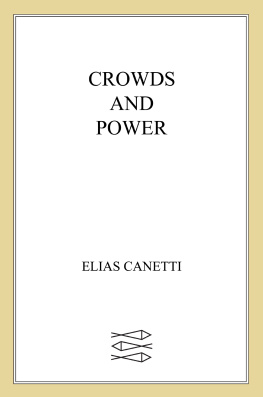
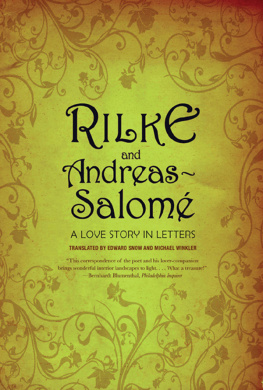

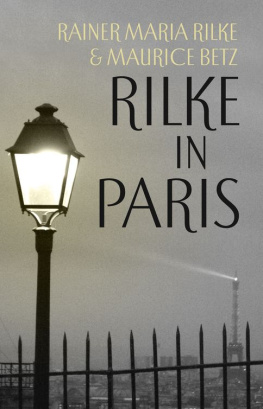
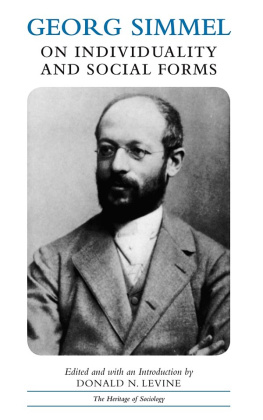
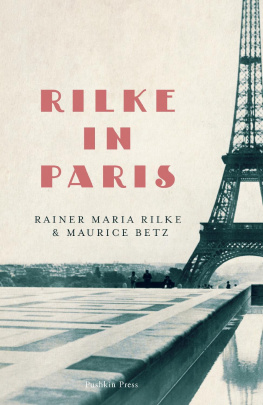

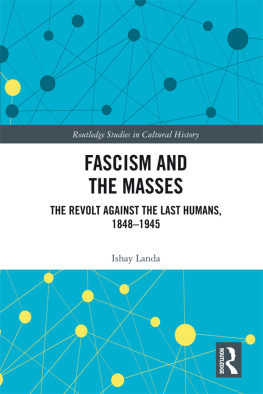

 New York
New York